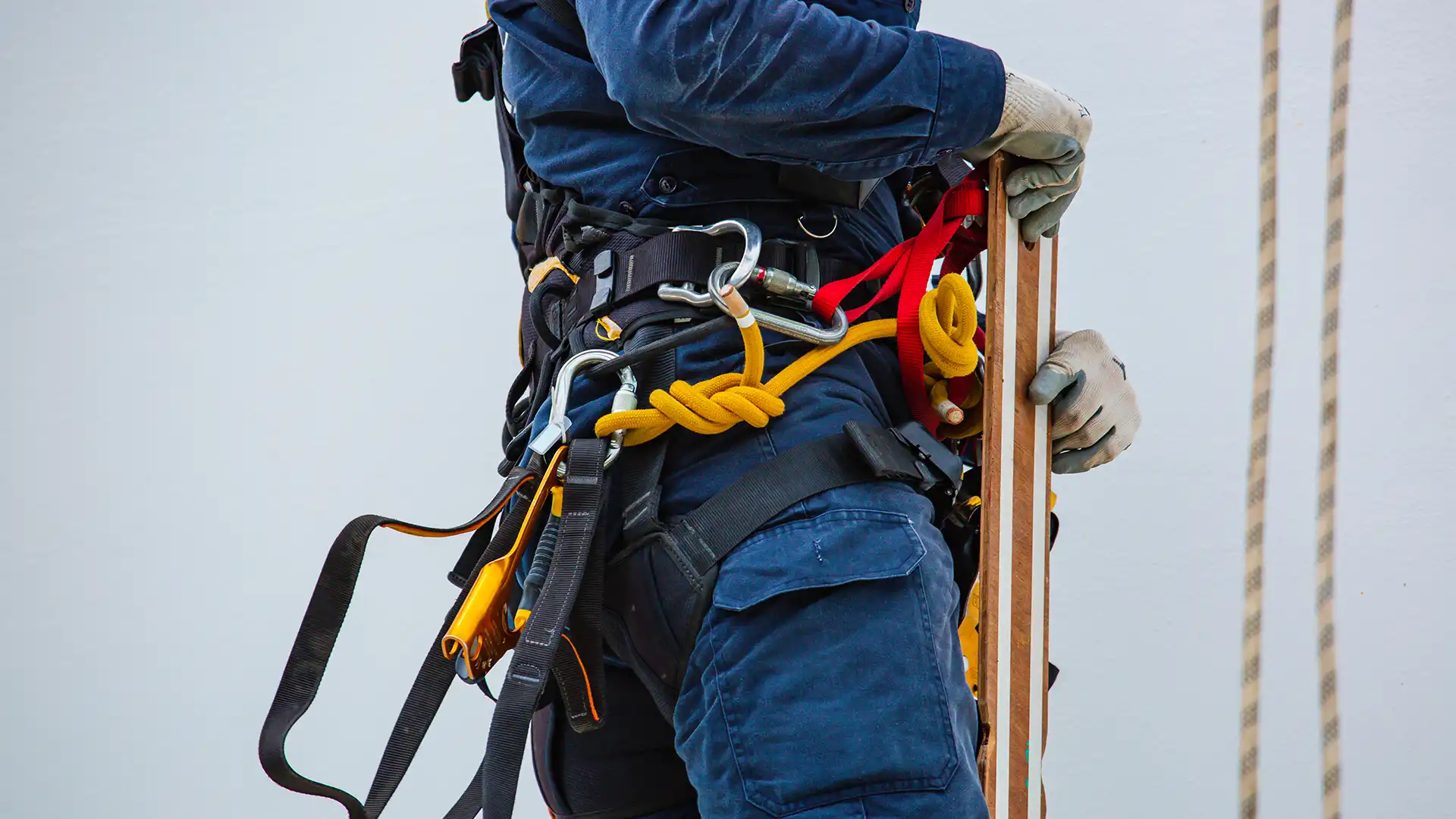A carabiner is one of the most critical components of work safety equipment for working at height, and an incorrect choice can jeopardize both safety and efficiency. EKS Work Safety, a manufacturer of specialized work safety equipment, emphasizes the vital importance of selecting a carabiner with the right features. So, what should you consider when choosing a carabiner?
What Is a Carabiner and Why Is It Important?
A carabiner is a metal connector that quickly and securely links two pieces of equipment or ropes. Typically made of steel or aluminum, it features a spring-loaded gate mechanism for opening and closing. It is used to minimize the risk of falling during work at height.
The importance of a carabiner lies in its ability to eliminate weak points in connection systems. An incorrect carabiner can compromise the entire safety system. With over 20 years of experience, EKS Work Safety provides high-quality products tailored to users’ needs.
Carabiner Load Capacity and Material
The durability of a carabiner used in working at height is the foundation of work safety.
- Load capacity (kN rating): This is the most critical factor determining the carabiner’s breaking point.
- Material quality: Steel carabiners offer high durability, while aluminum carabiners provide lighter handling.
EKS Work Safety offers a range of carabiner options suited to various work environments, making it easier to select the right equipment.
Importance of the Carabiner Locking Mechanism
A carabiner’s locking system is designed to prevent unintended opening during use. Screw-gate carabiners are preferred for static tasks, providing secure locking, while automatic-locking models offer significant convenience in fast-paced, dynamic work. Additionally, a locking mechanism that is easy to open and close enhances work efficiency and reduces human errors that could compromise safety.
When selecting a carabiner, pay attention to the following:
- Lock type: Must suit the work type (e.g., screw-gate, automatic-locking).
- Lock reliability: Should be operable with one hand and resistant to accidental opening.
- Durability testing: Must comply with international standards.
EKS Work Safety ensures high safety with locking mechanisms designed to meet these criteria.
Material Selection: Steel or Aluminum?
The material of a carabiner directly affects its performance. Steel carabiners are known for high durability and load capacity, making them ideal for heavy-duty tasks, such as in construction. EKS Work Safety’s EKS-154 Hook Carabiner, with its steel construction, offers functional and rapid use.
Aluminum carabiners, on the other hand, stand out for a lightweight design, making them ideal for activities like mountaineering. EKS Work Safety’s EKS-153 model, made of aluminum with a wide gate, is a notable option.
When choosing a material, evaluate the work environment. Steel may be more durable in humid or corrosive conditions, while aluminum offers advantages when weight is a priority.
Choosing a Carabiner Based on Its Application
Not every carabiner is suitable for every job, so the correct model must be chosen based on the task’s nature. In construction and energy sectors, high durability and automatic locking features are prioritized. In industrial production lines, models suited for fixed positioning are preferred. EKS Work Safety provides carabiner solutions tailored to the needs of various industries, enabling professionals to make the right choice.
Carabiner Standards and Certifications
A high-quality carabiner must comply with international safety standards. EN and CE certifications confirm the product’s reliability and successful testing. Carabiners lacking these standards can pose significant risks during work at height. EKS Work Safety tests all its carabiners to international standards, ensuring certified safety so users can focus confidently on tasks.
Common Mistakes in Carabiner Selection
Incorrect choices can significantly reduce equipment functionality and put users at risk. EKS Work Safety guides professionals in selecting the right carabiner and develops tailored solutions for every work environment. The most common mistakes include:
- Ignoring load capacity: Failing to select a carabiner with a kN rating suitable for the working conditions.
- Using the wrong lock type: Choosing automatic-locking carabiners for static tasks or screw-gate models for dynamic tasks.
- Opting for uncertified products: Using carabiners that lack EN or CE standards.
Importance of Carabiner Maintenance and Regular Inspection
Regular maintenance and inspection are as critical as choosing the right carabiner for ensuring ongoing safety. The carabiner’s surface should be regularly checked for deformation, and the locking mechanism must function smoothly. Carabiners showing signs of corrosion or wear should be replaced immediately. EKS Work Safety provides maintenance recommendations to support the long-term, safe use of carabiners.
Key maintenance considerations:
- Check the carabiner’s surface for cracks or dents.
- Test the locking mechanism for smooth operation.
- Replace worn or rusted carabiners with new ones.
Frequently Asked Questions About Carabiners
As a fundamental component of work safety equipment for working at height, carabiners often spark questions. Since the right carabiner directly impacts safety, these questions and the answers are highly important. Here are the most frequently asked questions and answers:
- What is a carabiner, and what is its purpose?
A carabiner is a durable piece of equipment used as a connection point in safety systems, applicable in fields from working at height to industrial applications. - What is the most important criterion in carabiner selection?
Load capacity, locking mechanism, and compliance with international standards are the primary criteria. - Can every carabiner be used for every job?
No. The carabiner type must be chosen based on the work environment, as different features are prioritized in construction, energy, or industrial sectors. - How often should carabiner maintenance be performed?
Regular visual inspections and locking mechanism tests should be conducted. Carabiners showing wear, rust, or deformation must be replaced. - Why is certification important for carabiners?
EN and CE certifications prove the product’s reliability and successful testing. Uncertified products pose safety risks.
These questions reflect the key concerns of users seeking accurate and reliable information about carabiners. EKS Work Safety addresses these questions with professional products tailored to various work environments.
Maximum Safety with the Right Carabiner Choice
Choosing the right carabiner is one of the most critical steps in ensuring safe work at height. Durability, locking mechanism, material quality, and compliance with international standards form the links of a safety chain that protects users’ lives. EKS Work Safety meets all these criteria with carabiner models designed for diverse industries. With professionally designed products, choosing the right carabiner is no longer a question mark—it becomes the standard for safe work.
Contact us to explore the carabiner models best suited to your needs or to get more information.
You can visit our LinkedIn page for more.



 by
by